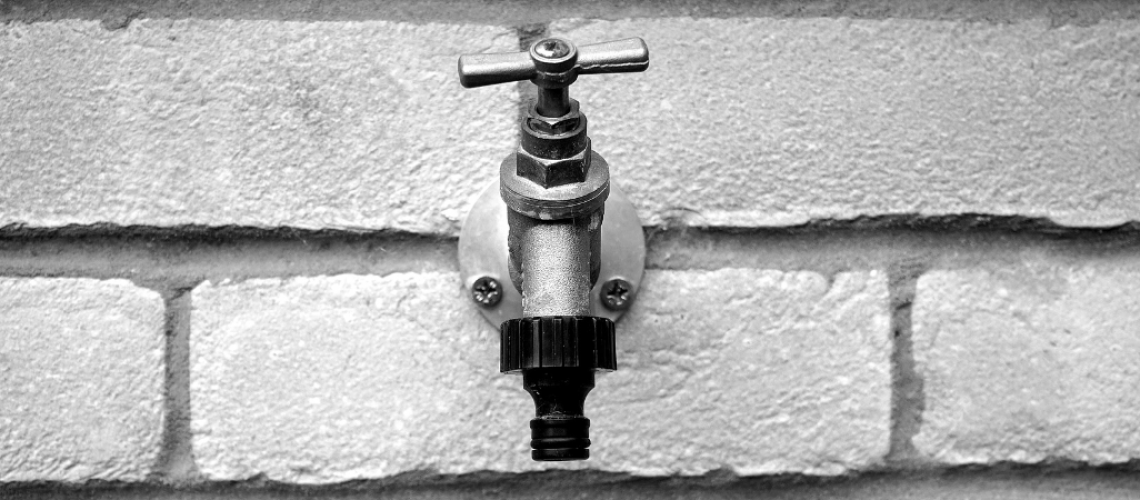Fitting an outside tap to a property is always a good idea. Watering the garden and cleaning the car suddenly become so much easier. Some basic plumbing skills are needed for the task of fitting an outside tap but it can be accomplished with care. First job is to turn off the water supply. If there is an isolation valve on the cold water supply pipe, turn the valve off. If there is not, go to the main stopcock which is usually found in the kitchen. When the water supply is turned off, turn on the cold tap on your kitchen sink and run until the water stops and the system is drained.
To install a new tap you will need to drill a hole through the outside wall for the connecting pipe work. The easiest thing to do is to put the tap near an exposed cold water supply close to the sink in the kitchen. Make sure to position the tap at least 250mm above the damp-proof course and mark the screw holes for the tap.
A 15mm diameter pipe will be required to connect the tap to the properties cold water supply. The hole for this will need to be about 150mm above where the earlier marks were made indicating the position of the tap. A quick job to do before drilling the hole is to make a ‘sleeve’ for the pipe to run through using a piece of 22mm diameter plastic pipe. This ‘sleeve’ will stop the pipe rubbing and if the pipe does burst it will stop water leaking out of the hole and also avoid having to claim on any household insurance policy. It is time to drill the hole next and make sure that the hole is big enough to take the diameter of the ‘sleeve’.
Cut through the cold water pipe directly under the hole that has been made in the wall. Use a hacksaw for this job and then file the ends. A T-piece connector is going to be fitted so make sure enough of the pipe has been removed. Connect one end of a short piece of pipe to the T-piece connector and the other end will be connected to the isolation valve, this means that the water supply to the new outside tap can be cut off if and when required. When deciding on whether to use copper or plastic pipes it is worth remembering that copper looks the best out of the two but plastic is much easier to work with. It is also best to use either Push Fit or Compression connectors as they will not need any soldering.
Finally to attach the new tap, drill the holes for the outside tap’s wall plate, use some plugs and then screw the tap plate to the wall. Put some plastic clips on the pipes on the inside which will stop any vibrating. Use a sealant to seal around the pipe. Then turn the water supply back on and hopefully there will be no leaks. If there is no leak, then it is another job well done.


